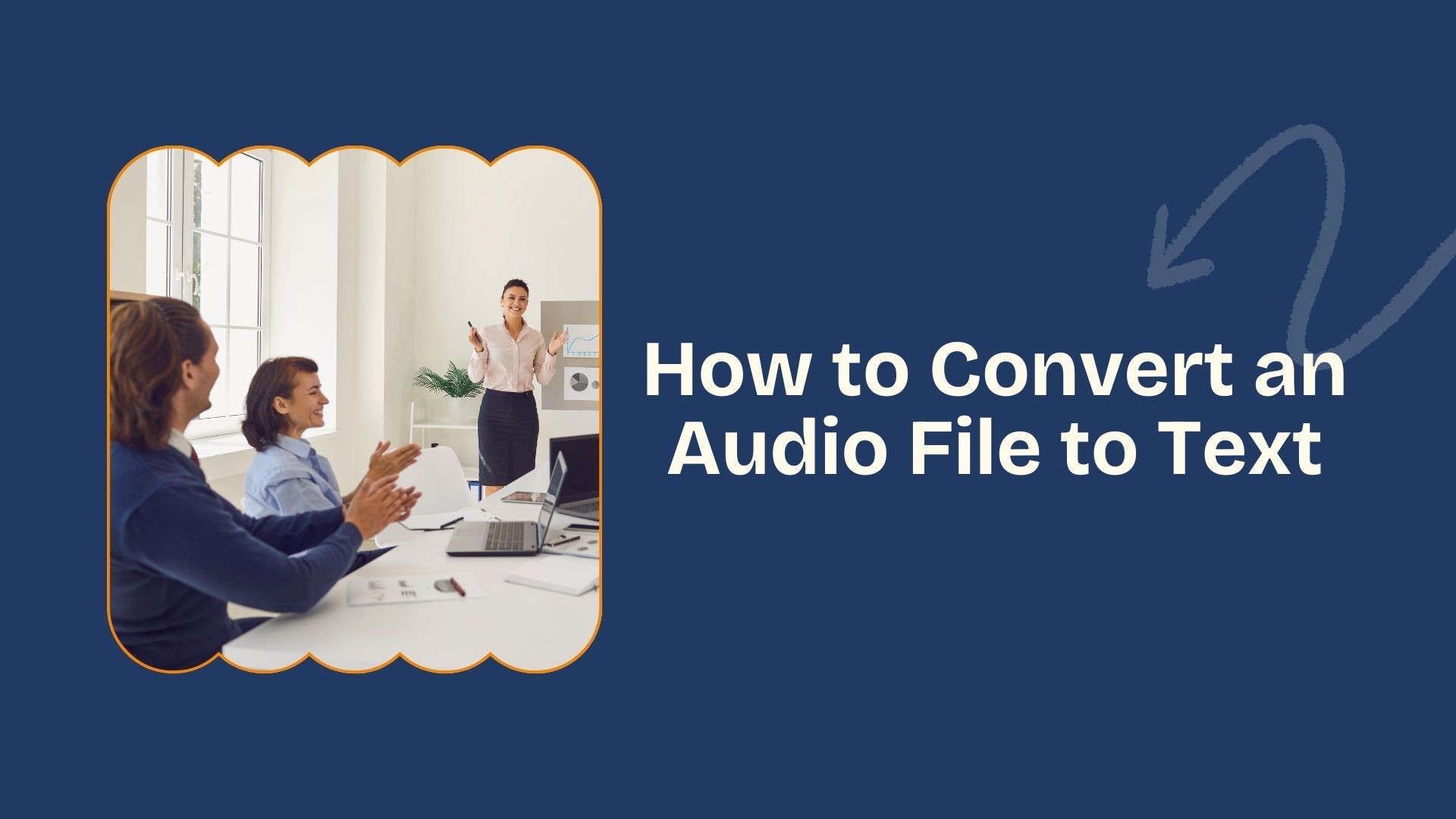Conversion fichiers audio en texte est devenu une pratique précieuse pour les étudiants, les professionnels et les créateurs de contenu. Que vous soyez transcription d'une conférenceQu'il s'agisse d'une interview ou d'un podcast, le fait de disposer d'une version textuelle claire de l'audio permet de gagner du temps, d'améliorer l'accessibilité et de rationaliser les flux de travail.
Dans ce blog, nous explorerons les différentes méthodes de conversion de fichiers audio en texte, nous discuterons des meilleurs outils pour ce travail et nous soulignerons les avantages de l'utilisation de l'outil de conversion. VOMO AIune solution de transcription performante.
Pourquoi convertir des fichiers audio en texte ?
La transcription audio vers texte offre de nombreux avantages, notamment
- Accessibilité renforcée: Rendre le contenu accessible aux personnes souffrant de déficiences auditives ou à celles qui préfèrent la lecture.
- Contenu consultable: Les fichiers texte facilitent la recherche d'informations spécifiques dans de longs enregistrements.
- Réutilisation du contenu: Utilisez les transcriptions pour créer des articles, des blogs, des posts sur les médias sociaux ou des notes d'étude.
- Amélioration de la collaboration: Partagez les transcriptions avec vos coéquipiers pour une meilleure collaboration lors de réunions ou de projets.
Méthodes de conversion des fichiers audio en texte
1. Transcription manuelle
La transcription manuelle consiste à écouter un fichier audio et à taper le contenu parlé. Bien que cette méthode permette d'obtenir une grande précision, elle prend beaucoup de temps et nécessite une main-d'œuvre importante.
Meilleur pour: Petits fichiers audio ou enregistrements contenant des termes très techniques qui nécessitent une compréhension précise du contexte.
2. Outils intégrés pour la conversion audio/texte
Certaines plateformes, comme Google Docs, offrent des fonctions de saisie vocale qui peuvent être utilisées pour la transcription en direct. Toutefois, pour les fichiers audio préenregistrés, des étapes supplémentaires peuvent être nécessaires.
Étapes de l'utilisation Google Docs : saisie vocale:
-
Lisez le fichier audio sur votre appareil.
-
Ouvrez Google Docs, cliquez sur Outilset sélectionnez Dactylographie vocale.
-
Veillez à ce que votre microphone capte clairement le son lors de la transcription.
Limites: Cette méthode nécessite un son clair et ne fonctionne pas bien en cas de bruit de fond ou d'interlocuteurs multiples.
3. Outils de transcription alimentés par l'IA
Transcription de l'IA ont révolutionné le processus en offrant des solutions rapides, précises et conviviales. Ces outils peuvent traiter des fichiers audio préenregistrés et générer des transcriptions en quelques minutes.
Les meilleurs outils pour convertir des fichiers audio en texte
1. VOMO AI
VOMO AI se distingue comme un outil complet de transcription et d'analyse, offrant des fonctionnalités qui vont au-delà de la simple transcription.
Pourquoi choisir VOMO AI ?
- Transcriptions précises: Téléchargez votre fichier audio, et VOMO AI le convertit rapidement en texte avec une grande précision.
- Notes intelligentes: Résume automatiquement les points clés, ce qui permet de gagner du temps lors des examens.
- Demandez à l'IA de vous éclairer: Interroger la transcription avec des questions spécifiques telles que "Quelles sont les idées principales ?"
- Différenciation des orateurs: Identifier les différents intervenants dans les discussions de groupe.
- Prise en charge multilingue: Transcription audio dans plus de 50 langues, idéale pour les utilisateurs internationaux.
Comment ça marche:
-
Téléchargez votre fichier audio dans l'application.
-
Laissez VOMO AI transcrire et analyser le contenu.
-
Utilisez Smart Notes et Ask AI pour rationaliser votre flux de travail.
2. Loutre.ai
Otter.ai est un outil de transcription populaire qui propose des formules gratuites et payantes.
Caractéristiques:
- Transcription de fichiers audio et de réunions en direct.
- Identification du locuteur pour des transcriptions plus claires.
Limites: Le plan gratuit limite la transcription des minutes par mois.
3. Description
Descript est un outil puissant de transcription et d'édition audio.
Caractéristiques:
- Permet la transcription de fichiers audio.
- Comprend l'édition de texte pour l'audio et la vidéo.
Limites: Principalement axé sur les créateurs de contenu, avec une courbe d'apprentissage abrupte pour les débutants.
4. Rev
Rev propose à la fois des services de transcription alimentés par l'IA et des services de transcription humaine.
Caractéristiques:
- Transcription rapide de l'IA.
- Transcription humaine pour une précision maximale.
Limites: La transcription humaine est coûteuse et le service d'IA peut nécessiter une révision.
Conseils pour une meilleure transcription
-
Utiliser des fichiers audio clairs: Plus le son est clair, meilleure est la la précision de la transcription.
-
Réduire le bruit de fond: Réduire le bruit pour améliorer la clarté.
-
Choisir le bon outil: Sélectionnez un outil de transcription qui réponde à vos besoins, comme le traitement de plusieurs locuteurs ou la prise en charge de différentes langues.
Comment VOMO AI Améliore l'expérience de la transcription
VOMO AI n'est pas seulement un outil de transcription, c'est aussi un outil de productivité. Voici comment il se surpasse :
- Réutiliser le contenu: Utilisez les transcriptions pour créer des blogs, des légendes ou des notes d'étude sans effort.
- Améliorer l'apprentissage: Résumez les cours ou les discussions avec les Smart Notes pour mieux les retenir.
- Collaboration mondiale: Transcrire et analyser des documents audio en plusieurs langues pour des équipes internationales.
Exemple de cas d'utilisation:
Un étudiant télécharge un cours enregistré, génère une transcription et utilise les Notes intelligentes pour se concentrer sur les points clés de la préparation à l'examen.
Réflexions finales
Convertir des fichiers audio en texte n'a jamais été aussi facile, grâce à des outils avancés alimentés par l'IA. Les options gratuites telles que Google Docs et Otter.ai répondent aux besoins de transcription de base, VOMO AI offre une expérience haut de gamme avec une précision inégalée, des notes intelligentes et des fonctions d'analyse avancées.
Prêt à rationaliser votre flux de travail de transcription ? Essayer VOMO AI aujourd'hui et voyez comment il transforme vos fichiers audio en informations exploitables !



